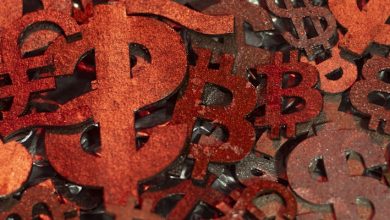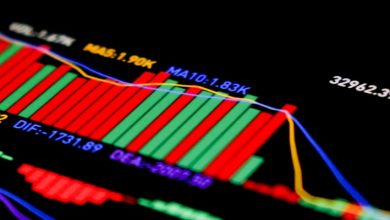The Role of Fear and Greed in Crypto Trading

- Understanding the psychology behind crypto trading
- Exploring how fear and greed drive market movements
- The impact of fear on decision-making in crypto trading
- Balancing fear and greed for successful trading strategies
- How to manage emotions like fear and greed in the crypto market
- Psychological factors influencing crypto traders’ behavior
Understanding the psychology behind crypto trading
One of the key aspects to consider when delving into the world of crypto trading is understanding the psychology behind it. Emotions play a significant role in how traders make decisions, particularly fear and greed. These two emotions can have a profound impact on the market, driving prices up or down based on the collective sentiment of traders.
Fear in crypto trading often manifests as a reluctance to take risks or a desire to cut losses quickly. When traders are driven by fear, they may sell off their assets at the first sign of trouble, leading to a downward spiral in prices. On the other hand, greed can cause traders to hold onto assets for too long in the hopes of maximizing profits, even when the market is showing signs of a downturn.
Understanding how fear and greed influence market behavior can help traders make more informed decisions. By recognizing when these emotions are at play, traders can take steps to mitigate their impact on their trading strategies. This could involve setting strict stop-loss orders to prevent losses from spiraling out of control or taking profits when the market is showing signs of overheating.
Ultimately, successful crypto trading requires a balance of rational analysis and emotional awareness. By recognizing the role that fear and greed play in the market, traders can develop more effective strategies for navigating the volatile world of cryptocurrency trading.
Exploring how fear and greed drive market movements
Fear and greed are two powerful emotions that play a significant role in driving market movements, especially in the volatile world of cryptocurrency trading. When traders are motivated by fear, they tend to sell off their assets quickly in a panic, causing prices to plummet. On the other hand, when greed takes over, traders may make irrational decisions based on the desire for quick profits, leading to market bubbles and subsequent crashes.
Understanding how fear and greed influence market movements is crucial for crypto traders looking to make informed decisions. By recognizing the impact of these emotions, traders can better navigate the ups and downs of the market and avoid falling victim to impulsive actions driven by fear or greed.
One common manifestation of fear in the crypto market is the phenomenon known as “FUD” (fear, uncertainty, and doubt). This refers to the spread of negative information or rumors that can cause widespread panic among traders and lead to a sharp decline in prices. Conversely, greed can manifest in the form of FOMO (fear of missing out), where traders rush to buy into a rising market out of fear of missing out on potential profits.
The impact of fear on decision-making in crypto trading
Fear plays a significant role in decision-making when it comes to crypto trading. The fear of losing money can often lead traders to make impulsive decisions that may not be in their best interest. When fear takes over, rational thinking goes out the window, and traders may end up selling their assets at a loss or missing out on potential opportunities.
One of the main ways fear impacts decision-making in crypto trading is by causing traders to panic sell when prices start to drop. This fear of further losses can result in a domino effect, with more and more traders selling off their assets, causing prices to plummet even further. This cycle of fear can create a self-fulfilling prophecy, as panicked selling leads to lower prices, which in turn leads to more fear-driven selling.
Another way fear influences decision-making in crypto trading is by causing traders to hesitate when it comes to making trades. The fear of making the wrong decision can paralyze traders, preventing them from taking action even when there are clear opportunities to buy or sell. This hesitancy can result in missed chances for profit and overall underperformance in the market.
Overall, it is essential for traders to be aware of how fear can impact their decision-making processes in crypto trading. By recognizing when fear is driving their actions, traders can take steps to counteract its effects and make more rational and strategic decisions. Developing a solid trading plan and sticking to it can help mitigate the influence of fear and ultimately lead to more successful outcomes in the volatile world of cryptocurrency trading.
Balancing fear and greed for successful trading strategies
When it comes to successful trading strategies in the realm of cryptocurrency, finding the right balance between fear and greed is crucial. Both emotions can heavily influence decision-making, leading to either missed opportunities or unnecessary risks.
Fear can often cause traders to hesitate when they should act, missing out on potential gains. On the other hand, greed can push traders to take on too much risk, leading to significant losses. Striking a balance between these two emotions is key to navigating the volatile world of crypto trading.
One way to achieve this balance is by setting clear goals and sticking to them. Establishing a plan before entering a trade can help mitigate the influence of fear and greed. By determining your entry and exit points in advance, you can make decisions based on logic rather than emotions.
Additionally, practicing risk management techniques such as setting stop-loss orders can help prevent emotions from taking over during trading. By limiting potential losses, traders can alleviate some of the fear of making a wrong decision and the greed of chasing unrealistic profits.
How to manage emotions like fear and greed in the crypto market
Managing emotions like fear and greed in the crypto market is crucial for successful trading. Emotions can cloud judgment and lead to impulsive decisions that may result in losses. Here are some strategies to help you navigate the emotional ups and downs of the market:
- Set clear goals: Establishing clear goals and a trading plan can help you stay focused on your objectives rather than being swayed by fear or greed.
- Practice mindfulness: Being mindful of your emotions and thoughts can help you recognize when fear or greed is influencing your decisions. Take a step back, breathe, and assess the situation rationally.
- Diversify your portfolio: Diversification can help reduce the impact of market volatility on your overall investments, minimizing the fear of losing everything in a single trade.
- Use stop-loss orders: Setting stop-loss orders can help you limit potential losses and prevent emotions from taking over when a trade moves against you.
- Seek advice from experts: Consulting with experienced traders or financial advisors can provide valuable insights and help you make more informed decisions based on data rather than emotions.
By implementing these strategies and staying disciplined in your approach to trading, you can better manage emotions like fear and greed in the crypto market and increase your chances of success.
Psychological factors influencing crypto traders’ behavior
Psychological factors play a significant role in influencing the behavior of crypto traders. Fear and greed are two of the most prominent emotions that drive decision-making in the volatile world of cryptocurrency trading. When traders are motivated by fear, they may be more likely to sell off their assets quickly to avoid potential losses. On the other hand, greed can lead traders to take unnecessary risks in the hopes of making a quick profit.
Additionally, cognitive biases such as confirmation bias and overconfidence can also impact traders’ behavior. Confirmation bias can cause traders to seek out information that confirms their existing beliefs about a particular cryptocurrency, leading them to overlook contradictory evidence. Overconfidence, on the other hand, can cause traders to overestimate their ability to predict market movements accurately, leading to poor decision-making.
Moreover, the phenomenon of herd mentality can also influence crypto traders’ behavior. When traders see others in the market buying or selling a particular cryptocurrency, they may feel pressured to follow suit, regardless of whether it aligns with their original trading strategy. This can lead to the formation of market bubbles and subsequent crashes as the collective behavior of traders drives prices to unsustainable levels.



